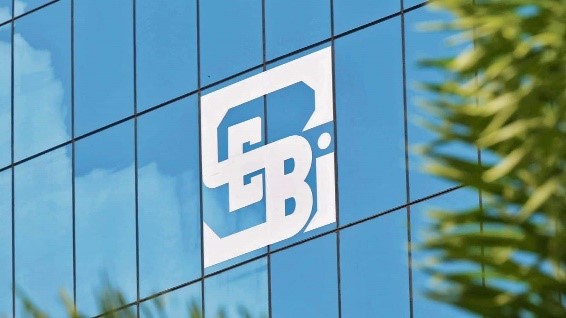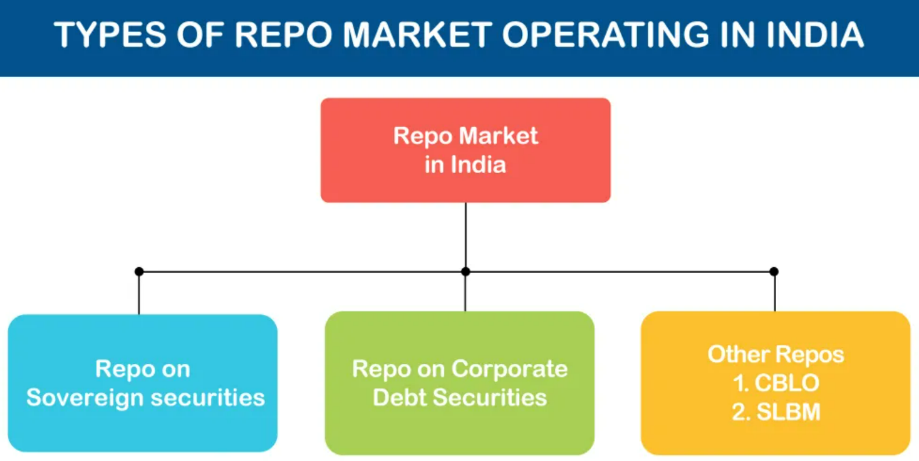Description

Disclaimer: Copyright infringement not intended.
Context
- Capital Markets Regulator SEBI put in place a dispute resolution mechanism for Limited Purpose Clearing Corporation (LPCC).
Background
LPCC
- LPCC is an organization that has been created to manage the process of clearing and settling repo transactions.
Decoding Repo
- Repo (Repurchase Option) is a formal agreement between two counterparties where one party sells securities to another party with the explicit intention of buying back the securities at a later date.
- The Repo can be called a Sell-Buy transaction. The seller of the securities agrees to buy back the securities from the buyer at a predetermined time and rate. The rate at which the seller agrees to buy back the securities will include the interest rate charged by the buyer for agreeing to buy the securities from the seller.
- The reason a seller wants to sell and buy back securities and pay interest on the transaction is that the seller requires funds. The Repo rate is the rate of interest charged by the buyer of the securities to the seller of the securities.

Types of Repo Market Operating in India
- REPO ON SOVEREIGN SECURITIES:
What is typically known as ‘Repo market in India’ is the repo market based on sovereign securities. It has got actually three different functional segments:
- RBI Repo or Liquidity Adjustment Facility Repo (LAF) at a fixed rate set by RBI in their quarterly policy review.
- Reverse repo rate is the rate of interest at which the RBI borrows funds from other banks in the short term.
- Like the repo, this is done by RBI selling government bonds to banks with the commitment to buy them back at a future date. This rate is the policy rate of the country.
- If the RBI wants to make it more expensive for banks to borrow money, it increases this repo rate or LAF.
- Market repo among banks and institutions at market-determined rates. The market repo rate is determined by the creditworthiness of the borrower, liquidity of the collateral, and comparable rates of other money market instruments. Being a collateralized loan, its rate is generally lower than the unsecured call money rates.
- Term Repo under the Liquidity Adjustment Facility (LAF) for 14 days and 7 days tenors for banks (scheduled commercial banks other than RRBs) introduced in October 2013, in addition to the existing daily LAF (repo and reverse repo), but the rates are market determined.
- In other words, an increase in the repo rate will lead to liquidity tightening and vice-versa, other things remaining constant.
- The banks use the reverse repo facility to deposit their short-term excess funds with the RBI and earn interest on it.
- An increase in the reverse repo rate will decrease the money supply and vice-versa, with other things remaining constant.
- An increase in reverse repo rate means that commercial banks will get more incentives to park their funds with the RBI, thereby decreasing the supply of money in the market.
- REPO ON CORPORATE DEBT SECURITIES:
- As part of the measures to develop the corporate debt market, RBI has permitted the following entities to undertake repo in corporate debt securities since January 2010:
-
- Scheduled Commercial Banks excluding Regional Rural Banks (RRBs) and Local Area Banks (LABs)
- Primary Dealers (PDs)
- All-India Financial Institutions
- Non-Banking Financial Companies (NBFCs)
- Mutual funds
- Housing Finance Companies
- Insurance Companies
- This is similar to repo in Government securities except that corporate debt securities are used as collateral for borrowing funds.
- Only listed corporate debt securities that are rated ‘AA’ or above by the rating agencies are eligible to be used for repo. Commercial paper, certificate of deposit, non-convertible debentures of original maturity less than one year are not eligible for the purpose.
- OTHER REPOS
- CBLO segment operated by CCIL and SLBM operated by stock exchanges under the jurisdiction of SEBI are also treated as variants of the repo market in India.
- CBLO : Collateralized borrowing and lending obligations (CBLOs) is operated by the Clearing Corporation of India Ltd. (CCIL) and Reserve Bank of India (RBI). CBLOs allow short-term loans to be secured by financial institutions, helping cover their transactions. To access these funds, the institution must provide eligible securities as collateral—such as Treasury Bills that are at least six months from maturity.
- SLBM : Stock Lending & Borrowing Mechanism is a system in which a trader can borrow shares that they do not already own or can lend the stocks that they own. An SLB transaction has a rate of interest and a fixed tenure. For example, you have a negative view on the price of a stock. You can borrow shares from SLB and sell them. You can buy them back if and when the price falls. Your profit is the difference between the selling price and the buying price, after deducting the interest rate.
An efficient Repo Market,
- An efficient repo market enhances the growth of the debt securities market by increasing the liquidity of the underlying debt securities.
- Additionally, it enables market players to obtain funds temporarily by monetizing their debt holdings without disposing of the underlying assets.

Aim of SEBI’s dispute resolution mechanism for Limited Purpose Clearing Corporation (LPCC)
- The aim of the mechanism is to address and resolve disputes and claims arising from transactions cleared by the LPCC.
The Mechanism
- The mechanism will be used to -
- Settle disputes between Clearing Members;
- Contention between the Clearing Members and their clients;
- Differences between the LPCC and its vendors; and
- Disputes between clearing members or its clients and the LPCC.
|
CLEARING PARTNERS/MEMBERS: DEFINITION, MEANING & BASICS
In stock exchanges, there are different types of clearing partners or members who help clear and settle transactions in securities.
The Clearing Member performs the following functions:
- Clearing - Computing obligations of all his trading members by determining positions to settle.
- Settlement - Performing actual settlement. Only funds settlement is allowed at present in Index as well as Stock futures and options contracts
- Risk Management - Setting position limits based on upfront deposits / margins for each trading member and monitoring positions on a continuous basis.
There are several categories of Clearing Members.
Trading Member Clearing Member: This is a clearing member who is also a trading member. They clear and settle their own proprietary trades, their clients' trades as well as trades of other trading members and custodial participants
Professional Clearing Members: These members are not trading members, however they clear trades of clients. PCMs are typically banks, custodians etc.
Self-Clearing Members: They are also trading members but clear and settle only their proprietary trades and their clients' trades.
The stock exchanges have eligibility norms for all clearing members.
|
- Under the framework, an amount of 0.5 basis points of the issuance value of debt securities per annum based on the maturity of debt securities will be collected by the stock exchanges and placed in an escrow account before the allotment of the debt securities. This amount is applicable on a public issue or private placement of debt securities.
- The disputes arising between clearing members of the LPCC will be settled by conciliation and/or by an arbitration panel consisting of three clearing members, other than the clearing members who are party to the dispute.
- The decision of the arbitration panel would be final and binding on the parties.
- All disputes between a clearing member and the LPCC would be resolved as per the dispute resolution mechanism prescribed by it.
- In case, a Clearing Member or the LPCC is not satisfied with the decision as per such mechanism, then the disputes must be resolved in accordance with the procedure laid down in the Payment and Settlement Systems Act, 2007 and rules and directions notified thereunder.
The new framework would come into force with immediate effect.
|
PRACTICE QUESTION
Q. With reference to Indian economy, consider the following:
1. Bank rate
2. Open market operation
3. Public debt
4. Public revenue
Which of the above is/are component/components of Monetary Policy?
1 only
2, 3 and 4
1 and 2
1, 3 and 4
Answer
Option 3: 1 and 2
|

https://www.business-standard.com/markets/news/market-regulator-sebi-comes-out-with-dispute-resolution-mechanism-for-lpcc-123041700837_1.html














